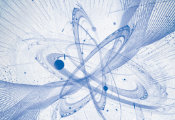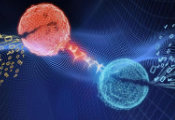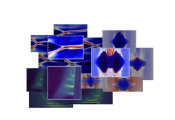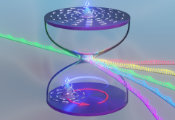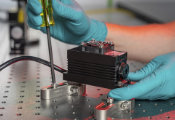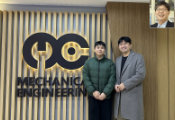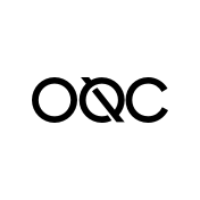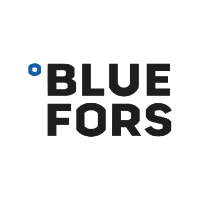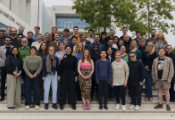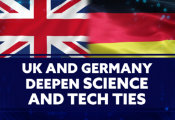Pushing the Boundaries of Quantum Experiments
September 04, 2025 -- Quantum physics makes predictions that seem to contradict our everyday experience: quantum particles can exist in a superposition of several states at once. They can move in different directions simultaneously, be located at different places at the same time, or rotate in different directions simultaneously. Normally, we don’t notice any of this, because the objects we deal with in daily life are far too large to display such quantum effects.
But where exactly is the boundary between tiny quantum particles that obey the laws of quantum physics and large objects that follow the rules of classical physics? Physicist Uroš Delić, who is an Assistant Professor at TU Wien, is addressing this question and pushing the limits of what was previously thought possible. He succeeds in inducing quantum properties in solid particles that are, by quantum standards, gigantic – consisting of billions of atoms. This not only allows us to gain new insights into fundamental laws of nature, but also paves the way for new quantum technologies and measuring devices. For this, Delić will receive an ERC Starting Grant, one of the most highly endowed and prestigious grants in European research.
Small and Large at the Same Time
“The techniques we use originally come from atomic physics,” explains Uroš Delić. “With so-called optical tweezers you can trap and study single atoms at specific locations. But we apply this method to much larger objects: silica particles with a diameter of around one hundred nanometers.”
These particles are still far too small to be seen with the naked eye, but in terms of quantum research, they are enormously large. Normally, objects of this size do not display any measurable quantum properties. In recent years, however, Uroš Delić has achieved important breakthroughs clearly showing that even such particles can be placed in states that can only be explained with the help of quantum physics.
“We now plan to place a silica particle and a single atom in close proximity next to each other,” says Delić. “Then we let them interact with each other via photons. This allows us to investigate how the quantum properties of the atom can be linked to the quantum properties of the much larger particle – and how they can even become quantum-mechanically entangled.”
Such experiments are only possible with extraordinary precise experimentation: the particles must be placed in an ultra-high vacuum and shielded almost perfectly from their environment. Only then is there hope of detecting quantum effects.
Hot and Cold at the Same Time
“Our silica particle is trapped and cooled to a state of extremely low motional energy, so that it stays in place,” Delić explains. “This low motional energy corresponds to an extremely low temperature, very close to absolute zero. At the same time, however, the atoms inside the particle still move relative to each other – and quite vigorously. The internal temperature of the particle is several hundred degrees.”
In a sense, the particle therefore has two completely different temperatures at once – depending on which degrees of freedom are considered.
Such systems allow scientists to tackle previously unsolved questions at the interface between quantum theory and thermodynamics. They also provide a highly sensitive measurement concept that can be used not only to test the limits of quantum physics, but also to explore fundamental questions about the laws of nature and even the nature of dark matter.
In addition, quantum-enabled silicon dioxide particles are an excellent system for precision measurements: their quantum properties react extremely sensitively to their surroundings, for example to the presence of additional atoms. This makes them ideally suited for developing novel high-performance sensors.
Uroš Delić
Uroš Delić is an Assistant Professor at the Institute of Atomic and Subatomic Physics at TU Wien. He studied physics at the University of Belgrade and the University of Vienna. As a student, he already completed research internships at the Institute for Quantum Optics and Quantum Information (IQOQI) of the Austrian Academy of Sciences and at MIT in the United States. In the group of Prof. Markus Aspelmeyer at the University of Vienna, he began working on nanoparticles and cooling them to extremely low temperatures. He completed his PhD there in 2019 and subsequently continued his work as a postdoctoral assistant.
Delić has already received several important awards, including an Austrian Marshall Plan Scholarship for his stay at MIT, an Award of Excellence from the Austrian Ministry of Education for his dissertation, and a START Prize from the Austrian Science Fund FWF. With his ERC Starting Grant, Uroš Delić will now expand his group and further his research at the Atominstitut of TU Wien.

